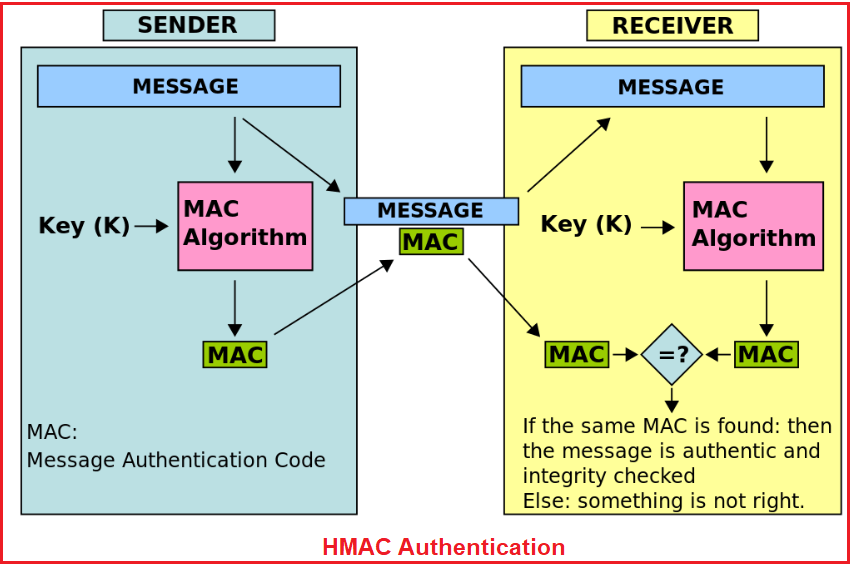RustToy01-腾讯云DNSpod API签名封装

1. 前言
因为最近做一个SSL证书自动化申请的app, 需要使用到DNS txt记录做ownership验证. 公司DNS解析商主要使用的是DNSpod, 腾讯云虽然有完整的API文档,但是缺少RUST语言的SDK, 所以自己就实现了一个简单的DNSpod RUST API封装.
这个项目代码的用途:
- 自己的DDNS,动态dns, 在家庭电脑中运行程序,动态的机械域名到家庭宽带IP
- 开发自己的自动SSL证书程序,最终做到公司全部的证书无限制的更新
- 根据腾讯云API,开发其他的SDK
2. RUST 依赖
主要使用的第三方库
Cargo.toml
[package]
name = "tencentcloudsign"
version = "0.1.0"
authors = ["EricZhou <neochau@gmail.com>"]
edition = "2018"
# See more keys and their definitions at https://doc.rust-lang.org/cargo/reference/manifest.html
[dependencies]
chrono = "0.4.19"
hex = "0.4.3"
hmac = "0.11.0"
reqwest = {version="0.11.4",features=["json"]}
serde = {version = "1.0.130",features = ["derive"]}
serde_json = "1.0.67"
sha2 = "0.9.8"
sha256 = "1.0.2"
tokio = { version = "1.11.0", features = ["full"] }
3. RUST 实现 HMAC Sha256
HMAC算法首先它是基于信息摘要算法的.目前主要集合了MD和SHA两大系列消息摘要算法. 其中MD系列的算法有HmacMD2,HmacMD4,HmacMD5三种算法;SHA系列的算法有HmacSHA1,HmacSHA224,HmacSHA256,HmacSHA384,HmacSHA512五种算法.
HMAC算法除了需要信息摘要算法外,还需要一个密钥. HMAC的密钥可以是任何长度,如果密钥的长度超过了摘要算法信息分组的长度,则首先使用摘要算法计算密钥的摘要作为新的密钥. 一般不建议使用太短的密钥,因为密钥的长度与安全强度是相关的.通常选取密钥长度不小于所选用摘要算法输出的信息摘要的长度.
SHA256是SHA-2下细分出的一种算法.SHA-2(安全哈希算法2)是由美国国家安全局(NSA)设计的一组加密哈希函数. SHA256其实就是一个哈希函数.哈希函数,又称散列算法,是一种从任何一种数据中创建小的数字“指纹”的方法.散列函数把消息或数据压缩成摘要,使得数据量变小,将数据的格式固定下来. 该函数将数据打乱混合,重新创建一个叫做散列值(或哈希值)的指纹.散列值通常用一个短的随机字母和数字组成的字符串来代表.
use hex;
use hmac::{Hmac, Mac, NewMac};
use sha2::Sha256;
use std::convert::TryInto;
pub fn hmac_sha256_hex(message: &[u8], key: &[u8]) -> String {
type HmacSha256 = Hmac<Sha256>;
let mut mac = HmacSha256::new_from_slice(key).expect("HMAC can take key of any size");
mac.update(message);
let result = mac.finalize();
let code_bytes = result.into_bytes();
let code_slice = code_bytes.as_slice();
hex::encode(code_slice)
}
pub fn hmac_sha256(message: &[u8], key: &[u8]) -> [u8; 32] {
type HmacSha256 = Hmac<Sha256>;
let mut mac = HmacSha256::new_from_slice(key).expect("HMAC can take key of any size");
mac.update(message);
let result = mac.finalize();
let code_bytes = result.into_bytes();
let code_slice = code_bytes.as_slice();
code_slice.try_into().expect("slice with incorrect length")
}
4. RUST DNSPod 签名方法 v3
文档中心 > DNSPod > API 文档 > 调用方式 > 签名方法 v3
下类代码签名代码参照golang实现,并且实现和golang版本代码进行对照测试.
pub async fn send_request<T: DeserializeOwned, P: Serialize>对reqwest进行封装fn make_timestamp_auth获取签名和时间戳
use chrono;
use reqwest::Client;
use reqwest::Result;
use serde::de::DeserializeOwned;
use serde::Serialize;
use sha256;
pub struct TencentCloudClient {
ak: String,
sk: String,
host: String,
service: String,
region: String,
version: String,
}
impl TencentCloudClient {
pub fn new(ak: &str, sk: &str) -> Self {
TencentCloudClient {
ak: ak.to_string(),
sk: sk.to_string(),
host: "dnspod.tencentcloudapi.com".to_string(),
service: "dnspod".to_string(),
region: "".to_string(),
version: "2021-03-23".to_string(),
}
}
pub async fn send_request<T: DeserializeOwned, P: Serialize>(
&self,
method: &str,
action: &str,
query_without_question_mark: &str,
body_obj: P,
) -> Result<T> {
let body = serde_json::to_string(&body_obj).unwrap();
let (ts, authorization) =
self.make_timestamp_auth(method, query_without_question_mark, body.as_str());
let url = format!("https://{}?{}", self.host, query_without_question_mark);
let response = Client::new()
.request(
reqwest::Method::from_bytes(method.as_bytes()).unwrap(),
reqwest::Url::parse(url.as_str()).expect("not a valid url"),
)
.header("Authorization", authorization)
.header("Content-Type", "application/json; charset=utf-8")
.header("Host", self.host.as_str())
.header("X-TC-Action", action)
.header("X-TC-Timestamp", ts.to_string().as_str())
.header("X-TC-Version", self.version.as_str())
.header("X-TC-Region", self.region.as_str())
.body(body)
.send()
.await?;
response.json().await
}
fn make_timestamp_auth(
&self,
method: &str,
query_without_question_mark: &str,
body: &str,
) -> (i64, String) {
let content_type_json = "content-type:application/json";
//https://cloud.tencent.com/document/product/1427/56189#Golang
let algorithm = "TC3-HMAC-SHA256";
let canonical_uri = "/";
let canonical_headers =
format!("{}; charset=utf-8\nhost:{}\n", content_type_json, self.host);
let signed_headers = "content-type;host";
let mut hashed_request_payload = sha256::digest("");
if method == "POST" {
hashed_request_payload = sha256::digest(body);
//对于 GET 请求,RequestPayload 固定为空字符串.此示例计算结果是 35e9c5b0e3ae67532d3c9f17ead6c90222632e5b1ff7f6e89887f1398934f064.
}
let canonical_request = format!(
"{}\n{}\n{}\n{}\n{}\n{}",
method,
canonical_uri,
query_without_question_mark,
canonical_headers,
signed_headers,
hashed_request_payload,
);
//println!("canonical_request {}", canonical_request);
// step 2: build string to sign
//let now = chrono::Utc.ymd(2021, 7, 29).and_hms(12, 12, 12);
let now = chrono::Utc::now();
let timestamp = now.timestamp();
//println!("ts: {}", timestamp);
let date = now.format("%Y-%m-%d").to_string();
let credential_scope = format!("{}/{}/tc3_request", date, self.service);
let hashed_canonical_request = sha256::digest(canonical_request);
let string2sign = format!(
"{}\n{}\n{}\n{}",
algorithm, timestamp, credential_scope, hashed_canonical_request
);
//println!("string2sign {}", string2sign);
// step 3: sign string
let secret_date = super::util::hmac_sha256(
date.as_str().as_bytes(),
format!("TC3{}", self.sk).as_str().as_bytes(),
);
let secret_service = super::util::hmac_sha256(self.service.as_bytes(), &secret_date);
let secret_signing = super::util::hmac_sha256("tc3_request".as_bytes(), &secret_service);
let signature =
super::util::hmac_sha256_hex(string2sign.as_str().as_bytes(), &secret_signing);
//println!("signature {}", signature);
// step 4: build authorization
let authorization = format!(
"{} Credential={}/{}, SignedHeaders={}, Signature={}",
algorithm, self.ak, credential_scope, signed_headers, signature
);
(timestamp, authorization)
}
}
#[cfg(test)]
mod tests {
use super::super::model;
use super::*;
use tokio;
#[tokio::test]
async fn test_reqwest_json() {
let ak = "your-tencent-ak";
let sk = "your-tencent-sk";
let arg = model::RecordArg {
sub_domain: "ddddd2ds3".to_string(),
domain: "libragen.cn".to_owned(),
record_type: "TXT".to_owned(),
record_line: "默认".to_owned(),
value: "8.8.8.8".to_owned(),
};
//let payload = serde_json::to_string(&arg).expect("not valid json");
//println!("arg === {}", payload);
let s: model::ResResponseCreate = TencentCloudClient::new(ak, sk)
.send_request("POST", "CreateRecord", "", arg)
.await
.expect("msg");
println!("result === {:?}", serde_json::to_string_pretty(&s).unwrap());
}
}
5. DNSPod需要的模型
模型定义相见文档 文档中心 > DNSPod > API 文档 > DNSPod相关接口 > 批量添加记录
#[derive(Serialize, Deserialize)]对腾讯云DNSPod json参数和返回值进行 struct 定义#[serde(rename_all = "PascalCase")]字段 json 映射为PascalCase eg sub_domain -> SubDomain
use serde;
use serde::{Deserialize, Serialize};
#[derive(Serialize, Deserialize)]
#[serde(rename_all = "PascalCase")]
pub struct RecordArg {
pub domain: String,
pub sub_domain: String,
pub record_type: String,
pub record_line: String,
pub value: String,
}
#[derive(Serialize, Deserialize)]
#[serde(rename_all = "PascalCase")]
pub struct ResResponseCreate {
pub response: ResResponseCreateContent,
}
#[derive(Serialize, Deserialize)]
#[serde(rename_all = "PascalCase")]
pub struct ResResponseCreateContent {
pub error: Option<ResResponseError>,
pub request_id: String,
pub record_id: Option<i64>,
}
#[derive(Serialize, Deserialize)]
#[serde(rename_all = "PascalCase")]
pub struct ResResponseError {
pub code: Option<String>,
pub message: Option<String>,
}
#[cfg(test)]
mod tests {
use super::*;
#[test]
fn test_json_model() {
let raw = r#"{"Response":{"Error":{"Code":"InvalidParameter.DomainRecordExist","Message":"记录已经存在,无需再次添加."},"RequestId":"311b7561-cc89-493e-8fce-151e39a2af97"}}"#;
let _mode: ResResponseCreate = serde_json::from_str(raw).expect("msg");
let raw = r#"{"Response":{"RecordId":891172194,"RequestId":"6d692211-98f2-4b33-ae7a-ac270386a450"}}"#;
let _mode: ResResponseCreate = serde_json::from_str(raw).expect("msg");
}
}
6. Rust main 调用实例代码
mod model;
mod txcloud;
mod util;
#[tokio::main]
async fn main() {
let ak = "your_tencent_ak";
let sk = "your_tencent_sk";
//https://cloud.tencent.com/document/product/1427/56179
let arg = model::RecordArg {
sub_domain: "585".to_string(),
domain: "libragen.cn".to_owned(),
record_type: "TXT".to_owned(),
record_line: "默认".to_owned(),
value: "8.8.8.8".to_owned(),
};
let result_instance:model::ResResponseCreate = txcloud::TencentCloudClient::new(ak, sk)
.send_request("POST", "CreateRecord", "", arg)
.await
.expect("msg");
let payload = serde_json::to_string(&result_instance).expect("not valid json");
println!("result === {:?}", payload);
}
最终输出结果为:
➜ tencentcloudsign git:(master) ✗ cargo run
Compiling tencentcloudsign v0.1.0 (/codeRust/tencentcloudsign)
Finished dev [unoptimized + debuginfo] target(s) in 3.11s
Running `target/debug/tencentcloudsign`
result === "{\"Response\":{\"Error\":null,\"RequestId\":\"80dcaab0-ac7f-47c1-bbe6-206479ae8ed9\",\"RecordId\":906525604}}"
➜ tencentcloudsign git:(master) ✗